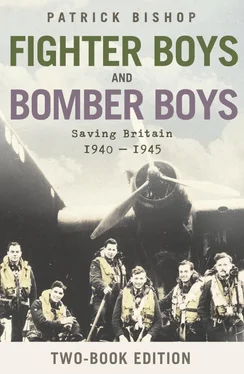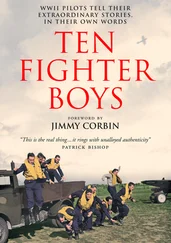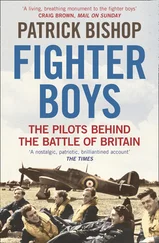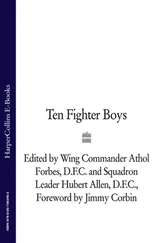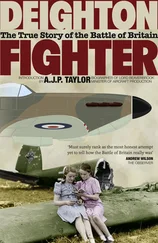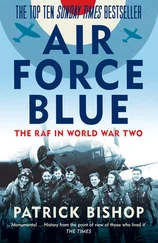1 ...7 8 9 11 12 13 ...23 Starved of money, he planned a small versatile service. Twenty squadrons were to be deployed overseas, ready to react rapidly to local unrest. Four squadrons would be held at home in reserve. All the rest of the RAF’s resources would be concentrated on training officers and men to provide a pool of expertise which could be drawn on when a crisis arose. New training establishments would have to be set up. Trenchard had rejected the suggestion of the generals and admirals that the RAF should use existing army and navy facilities. The ‘air spirit’ could only be fostered in places the RAF could call its own.
To solve the problem posed by the youthful nature of military flying, which meant there were many junior officers and comparatively few senior ranks, he proposed a novel system. Only half the officers at any time would hold permanent commissions. Of the rest, 40 per cent would be short-service officers, serving for four or six years with another four on the reserve. The other 10 per cent would be on secondment from the army and navy.
The permanent officers were to be supplied mainly by an RAF cadet college, the air force equivalent of Sandhurst or Dartmouth, and also from the universities and the ranks. Once commissioned, they would be posted to a squadron. After five years they were required to adopt a specialization, such as navigation, engineering or wireless.
The new air force needed a steady supply of first-class mechanics, riggers and fitters. Most of the thousands of skilled tradesmen who had manned the workshops and hangars on the Western Front and at home bases during the war had returned to civilian life. Trenchard’s Jesuitical solution was to recruit ‘boys and train them ourselves’. They would serve three-year apprenticeships before joining the ranks. There were also plans for a staff college, at Andover, to train future commanders, and centres for research into aircraft development, armaments, wireless and aerial photography.
Cranwell, in Lincolnshire, was chosen for the cadet college. Halton Park, in Hertfordshire, was selected for the main apprentice school. Cranwell was flat, windy and had a large existing airfield. Trenchard liked the fact that it was a long way from London. He hoped that, ‘marooned in the wilderness, cut off from pastimes they could not organize for themselves, they would find life cheaper, healthier and more wholesome’. This, he reckoned, would give them ‘less cause to envy their contemporaries at Sandhurst or Dartmouth and acquire any kind of inferiority complex’. 5
Halton, on the other hand, was chosen for the apprentices – ‘Trenchard brats’, as they became known – because of its proximity to the Smoke. Homesick adolescents would be in easier reach of their metropolitan parents and there were dance halls and cinemas nearby to keep them entertained when the working day was over.
Cranwell is scoured in the winter by freezing winds that race in from the Wash, sunny in the summer. It had been a training base for the Royal Naval Air Service. With the amalgamation of the RNAS and the RFC it had passed into RAF ownership. It opened as the Royal Air Force College in February 1920, the first military air academy in the world. The entrance examination was essentially the same as that for the Sandhurst and Woolwich army cadet colleges, testing applicants on a broad range of subjects, including English, history, languages ancient and modern and sciences – though you could be selected without tackling a science paper.
In the bleak late winter it was a dispiriting place. The first fifty-two cadets arrived, one of them wrote afterwards, to a ‘scene of grey corrugated iron and large open spaces whose immensity seemed limitless in the sea of damp fog which surrounded the camp’. 6The new boys lived in single-storey wood and iron huts, scattered on either side of the Sleaford road, linked by covered walkways to keep off the rain and snow. It was not until 1929 that money was available to start work on the main college building, which was specially designed to look old and respectable.
Despite its ramshackle origins, the college was confident from the beginning that it would be great. Writing in the first issue of the college magazine in September 1920, Churchill set the tone.
Nothing that has ever happened in the world before has offered to man such an opportunity for individual personal prowess as the air fighting of the Great War. Fiction has never portrayed such extraordinary combats, such hairbreadth escapes, such an absolute superiority to risk, such dazzling personal triumphs…It is to rival, and no doubt to excel these feats of your forerunners in the Service that you are now training yourselves and I, for one, look forward with confidence to the day when you who are not at the College will make the name of the Royal Air Force feared and respected throughout the world. 7
The RAF thought hard about the sort of boy it was looking for. In 1919 a committee chaired by Lord Hugh Cecil, the staff officer who had waved Cecil Lewis into the RFC on the basis of his fives prowess, was set up to try and define the educational and human qualities needed for the officer corps. The architects of the new service accepted, in theory at least, that it should be open to all talents. It had been clear since the end of the previous century that social exclusivity was ultimately incompatible with the technological competence modern warfare required. The first senior military figure to understand this was Admiral Fisher, who insisted all his officers had a degree of technical understanding, a move that challenged the class structure of the Navy. 8
The Cecil Committee decided that all officers must be able to fly, though the qualification was not so rigid as to exclude good technicians who were poor aviators. It wanted boys who exhibited ‘the quality of a gentleman’. It was careful, though, to emphasize that by this they meant ‘not a particular degree of wealth or a particular social position but a certain character’. 9Even so, the new cadet college must have seemed to any ambitious lower-class boy and his parents as cold and daunting as the old ones. Air Ministry officials set out to recruit people like themselves. They wrote to public-school headmasters, advertising the benefits of a service career and claiming that flying training was not the hair-raising activity it had been in the war years (though this was far from the truth and accidents at the college were frequent). 10An Old Etonian officer was dispatched to the Alma Mater to act as a liaison officer.
Unlike the public schools, few state schools had the resources to provide coaching for the entrance exam. Fees were prohibitive. Parents were expected to pay up to £75 a year plus £35 before entry and £30 at the start of the second year towards uniform and books; this at a time when a bank manager earned £500 a year. Despite the Cecil Committee’s wish that selection should be ‘free of the suspicion of partiality in favour of either individuals or classes’, most cadets in the interwar years were public schoolboys.
The curriculum at the beginning was a mix of academic and practical subjects interspersed with drill and PT. In the first year there was little flying, though much time was spent in the workshops and hangars. Cadets lived five to a hut until their fourth, senior, term, when they got their own cubicles. They received £2 15s. (£2.75) a week and each day was packed with activities from reveille at 6.45 a.m. to dinner in the mess. Sports were a fetish, particularly rugby, which Trenchard considered ‘the best game for making an officer and a gentleman out of any material’. 11Keenness on boxing was admired. The life was clean, spartan, boisterous. Women were nowhere to be seen, except at the end-of-course dance, and the limited delights of Sleaford, the local town, were out of bounds. Cadets were allowed motorcycles but not cars and the lanes round about buzzed with souped-up Broughs and Rudges.
Читать дальше
